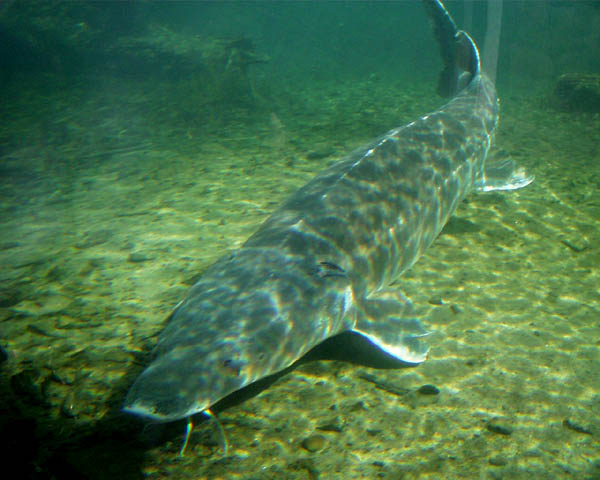HOW TO CATCH STURGEON
Sturgeon are bottom-feeding fish, like catfish, that will eat just about anything that lives on the lake bed and ends up there when it dies. Large sturgeon living in Pacific rivers and bays feast on salmon and shad that die after spawning. They will eat all kinds of roe, clams and mussels, crawdads, or bottom-dwelling fish like freshwater sculpin that try to hide instead of fleeing.
In Santa Ana River Lakes and Corona Lake, it is likely the sturgeon will quickly adapt over to feeding on the huge threadfin shad populations in both lakes, which routinely die-off and cover the bottom of these lakes. Frozen shad and other cut baits like those used for catfish are certain to catch the new additions to these two lakes. In the past at the Lakes, shrimp slathered with Gravy has also worked well catching the big ones.
A standard sliding egg sinker rig should be perfect. Since few of the initial plants will be larger than 15 pounds, so six to 12-pound main line with a 1/4 to 1/2-ounce weight should suffice. An appropriately-sized barrel swivel between the weight and the leader is the next part of the rig and keeps the line from twisting. The leader is then tied to a baitholder hooks from No. 4 up to a 1/0, depending on the size of the bait, and this completes the rig.
The fish quickly learn what a baited hook is all about and anglers might have to fish lighter leaders and more delicate set-ups to consistently get action. The question if you scale down to six- or even four-pound test will be whether or not you can land the fish.
When first hooked, sturgeon frequently head right to the surface and leap out of the water, tailwalking across the surface like a marlin. Then the angler will be faced with long, sustained runs and head-shaking. When finally tired and brought into shallow, shoreline water, the fish is likely to spin, catching and breaking the line on the bony barbs along all four sides of its body.
How to catch Sturgeon, rigging techniques, and bait to use



